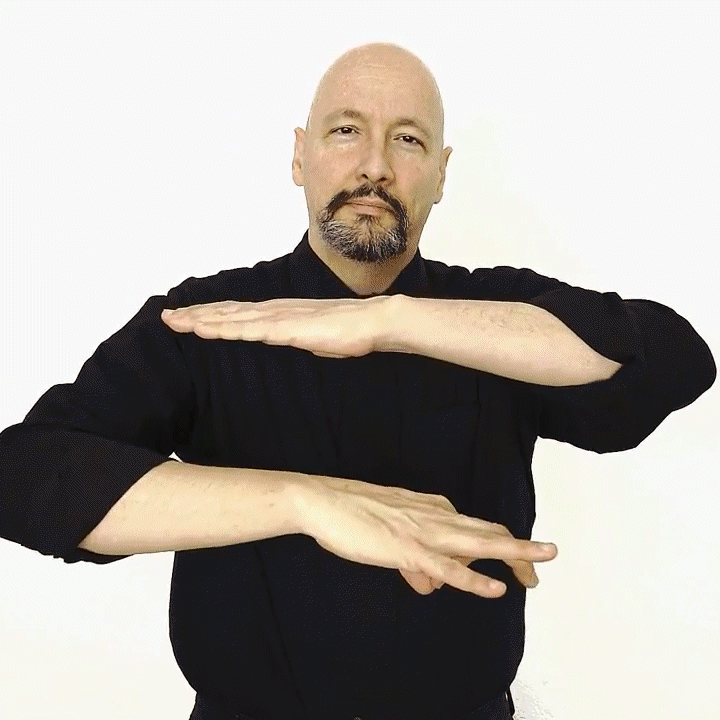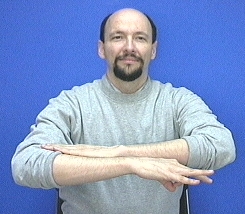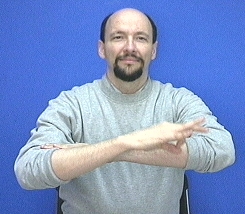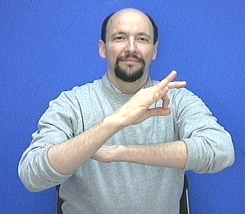DAWN: The
American Sign Language (ASL) sign for "dawn"
Dawn means the first appearance of sunlight in the morning. (See:
SUNRISE)
Dawn also means "the beginning" of something. (See
START)
Dawn can also mean to "develop an understanding of" something or to have a
"realization." For example, "It dawned on me that ..." can mean "it
occurred to me" or "I realized." (See: REASON, THOUGHT-APPEAR, or
LIGHTBULB-turn-on-in-head)
Many people think that dawn and sunrise are the same but technically dawn and
sunrise are two different things.
Dawn happens before sunrise
Some people who are "into" dawn become very specific about it.
For example they divide dawn into three different stages:
Astronomical dawn is when the sun is 18 degrees below the horizon
Nautical dawn is when the sun is 12 degrees below the horizon
Civil dawn is when the sun is six degrees below the horizon
The fact that technically dawn is the start of morning twilight and ends at
sunrise doesn't stop people from using the word dawn to mean things like
"morning" or "sunrise." To many people the phrase "at the crack of dawn"
simply means "early in the morning."
I mention all that to help you understand why the following is true:
In American Sign Language we generally just sign SUNRISE to mean "dawn."
-------------------------------------
SUNRISE, dawn, sunup, daybreak, break of day, wee hours
For more versions of this sign, see: "SUNRISE"




If you specifically need to indicate the concept of dawn then either
fingerspell it and/or explain it.
Notes and discussion:
Subject: DAWN vs SUNRISE
Question:
Hello Dr. Vicars,
My name is Ali
██████. I'm starting to learn ASL using Lifeprint, and
I had a question after the lesson about times of day.
I'm a practicing Muslim, and our morning prayers can be done between dawn and
sunrise. When I went to
█████████.com to check the signs, the signs for each
looked quite similar, maybe identical. The difference between the two times of
day is more than academic for me: it's an aspect of my daily life. Am I simply
not seeing a subtle difference on the
█████████.com signs? If the signs for DAWN and SUNRISE
are in fact the same, how can I differentiate between the two? Thank you in
advance.
Sincerely,
Ali
██████
Hello Ali,
You bring up an important and interesting point.
American Sign Language (and many individuals within American culture) in general
does not distinguish between "dawn" and "sunrise."
There are ways to indicate the period between dawn and sunrise but those ways
are sentence-long explanations -- not widely understood efficient / individual
signs.
I can think of a couple of efficient ways to sign DAWN but they would be
protologisms -- not established signs for typical everyday purposes -- and would
need to be explained every time you started interacting with a new conversation
partner.
An approach to dawn would be the sign "early-MORNING" (which is a modification
of MORNING in which the dominant hand makes a small quick arrested movement that
doesn't rise above the horizontal plane of the non-dominant arm. That simply
means early morning to most people -- but you could add "NOT-YET SUNRISE."
At this time the most simple (but perhaps unsatisfying) solution is that when
you need specificity just fingerspell "DAWN."
Warm regards,
+ Bill
________________________
William G. Vicars, Ed.D.
ASL University (Lifeprint.com)
ŻŻŻŻŻŻŻŻŻŻŻŻŻŻŻŻŻŻŻŻŻŻŻŻŻ
Notes:
*
Want to help support ASL University? It's easy:
DONATE (Thanks!)
* Another way to help is to buy something from Dr. Bill's "Bookstore."
* Want even more ASL resources? Visit the "ASL Training Center!" (Subscription
Extension of ASLU)
* Also check out Dr. Bill's channel:
www.youtube.com/billvicars
You can learn American Sign Language (ASL) online at American Sign Language University
ASL resources by Lifeprint.com İ Dr. William Vicars